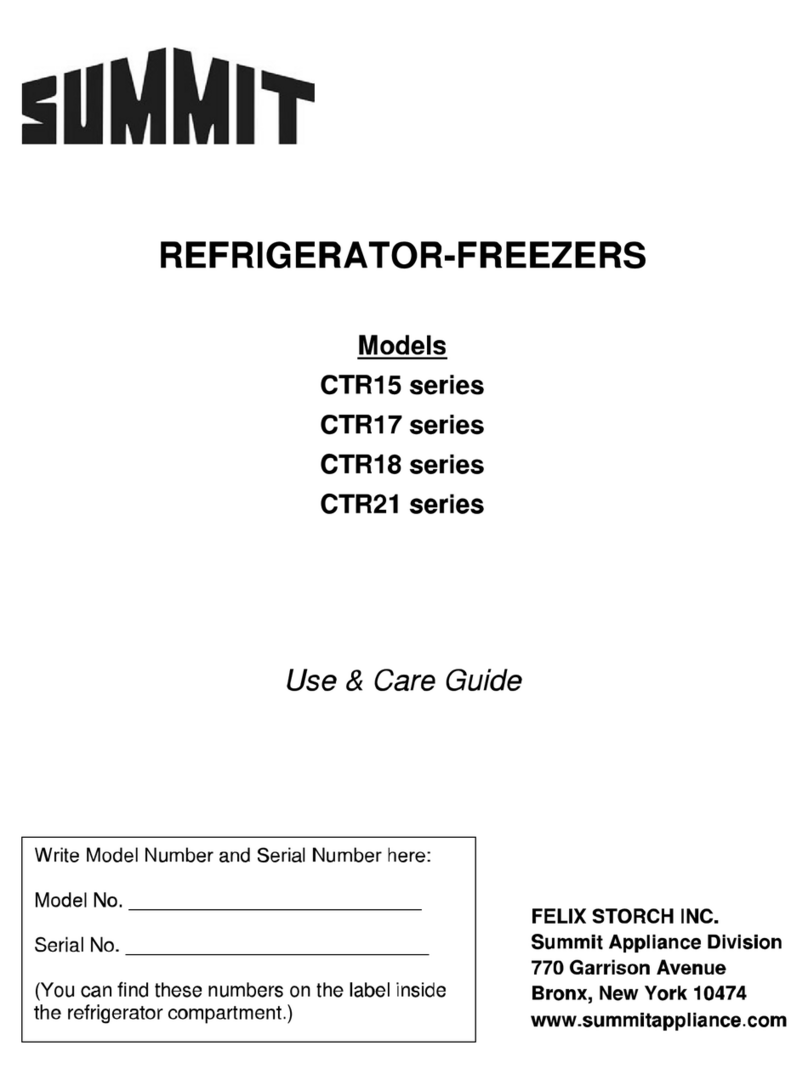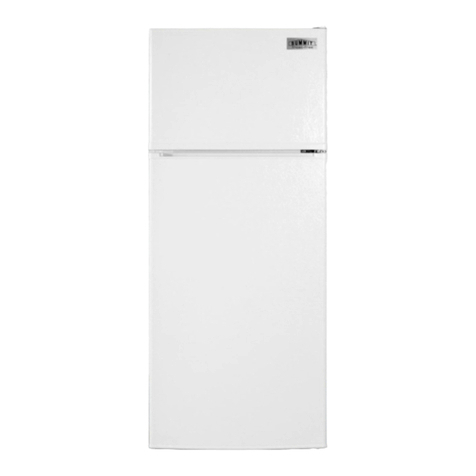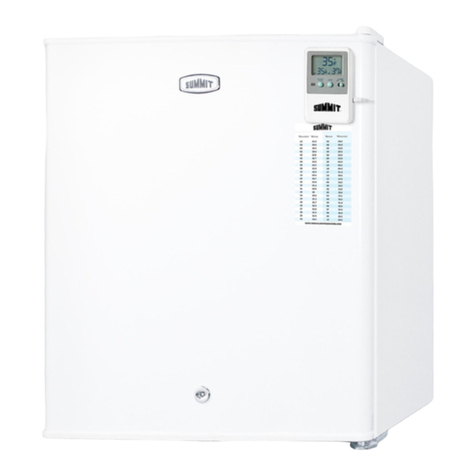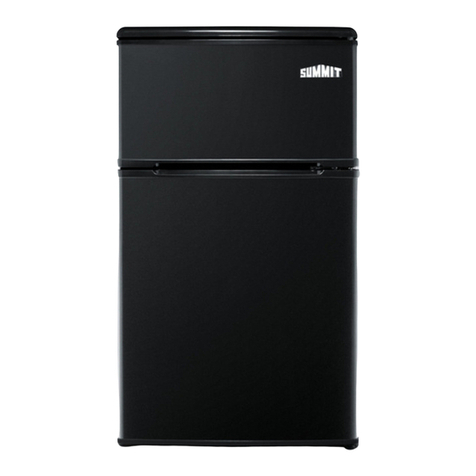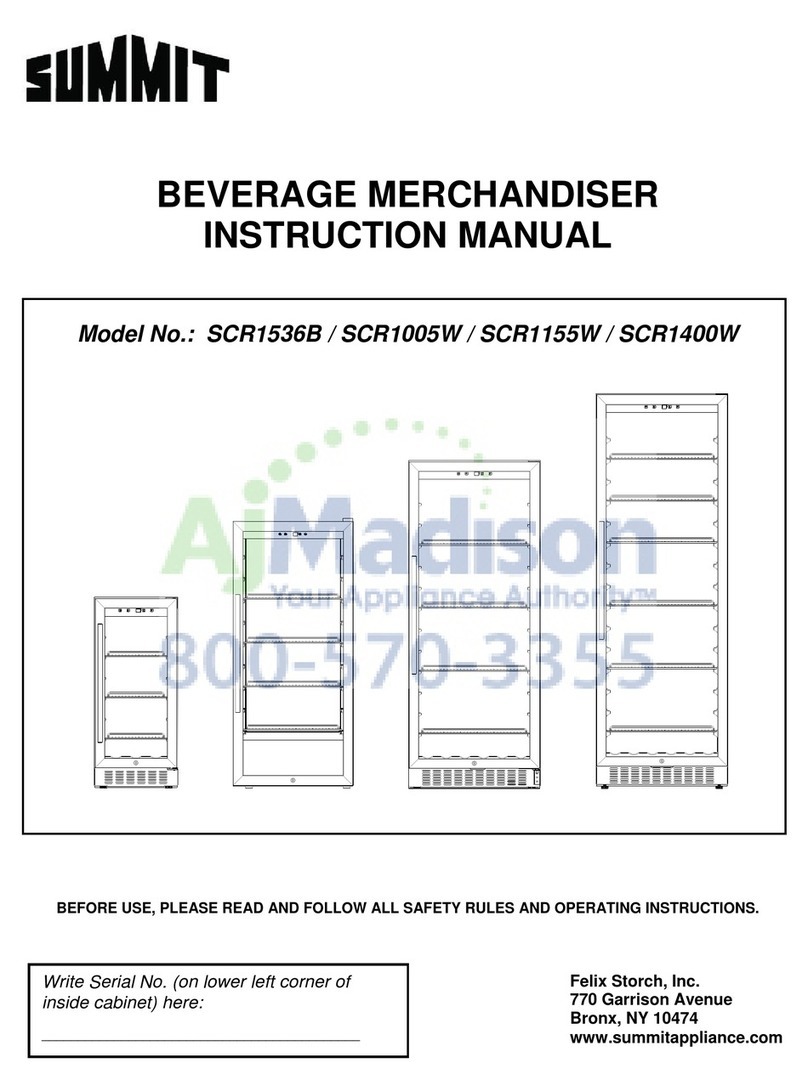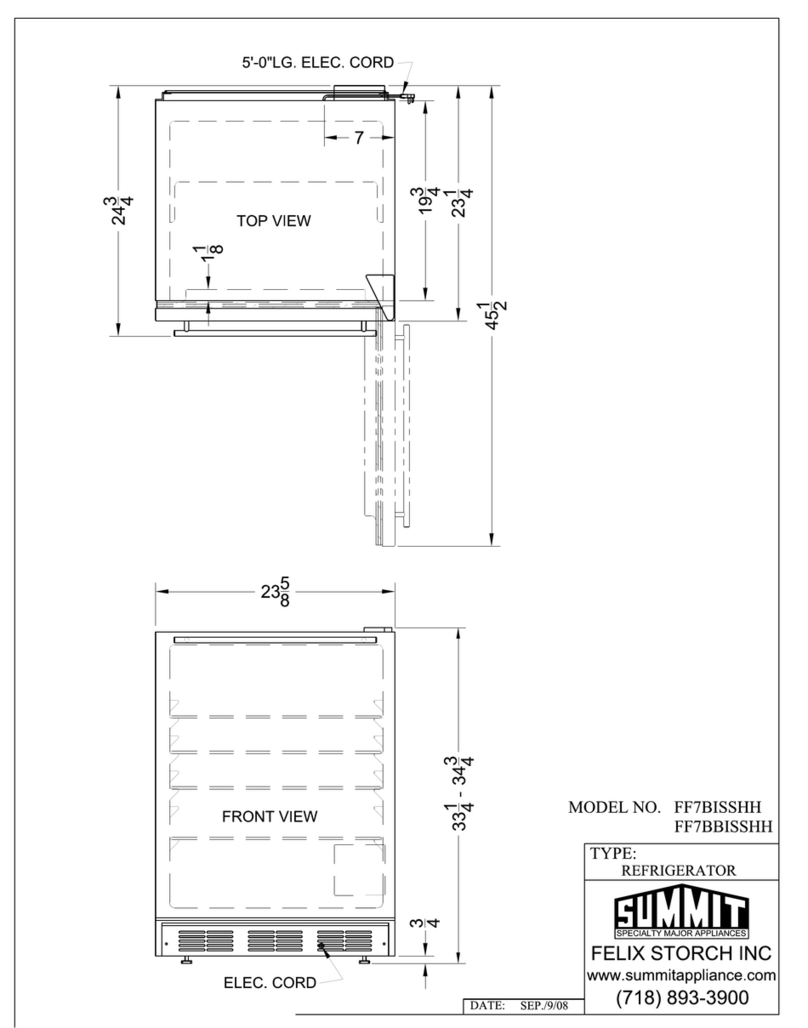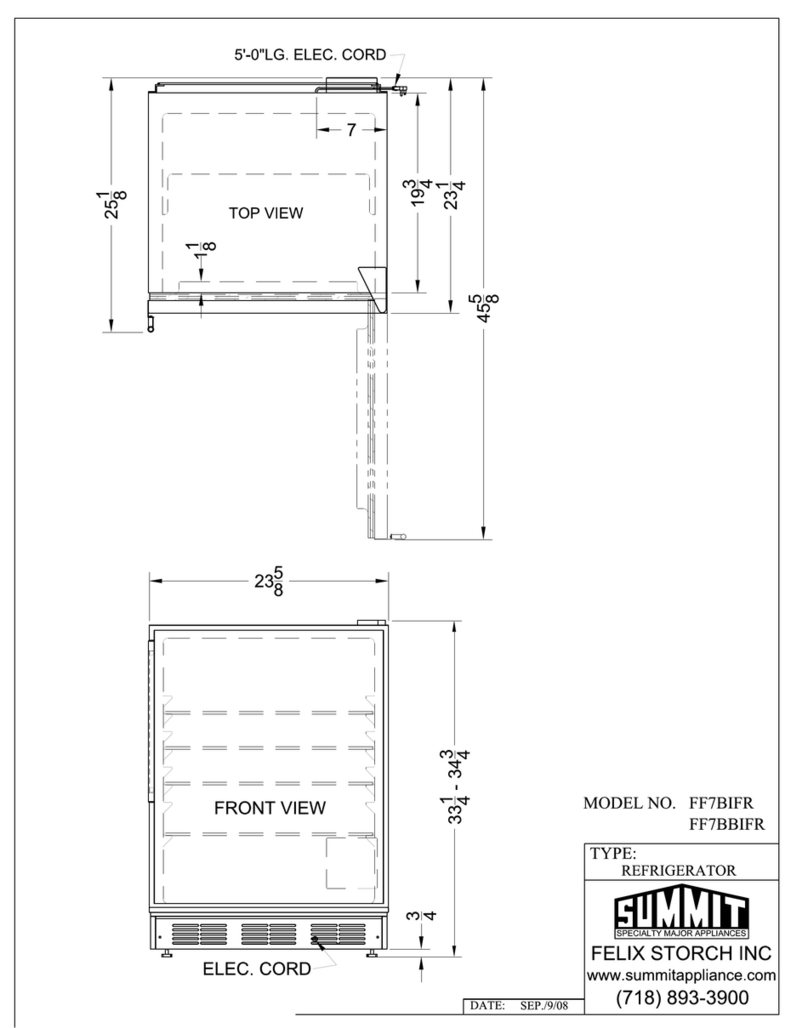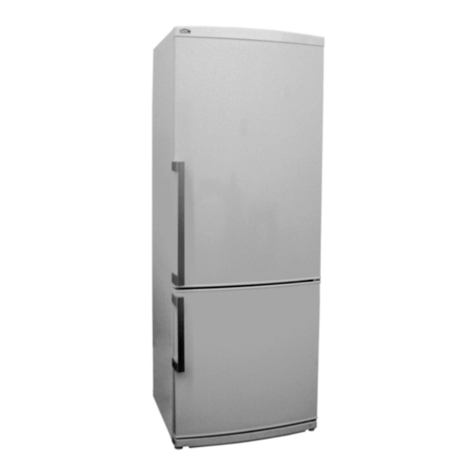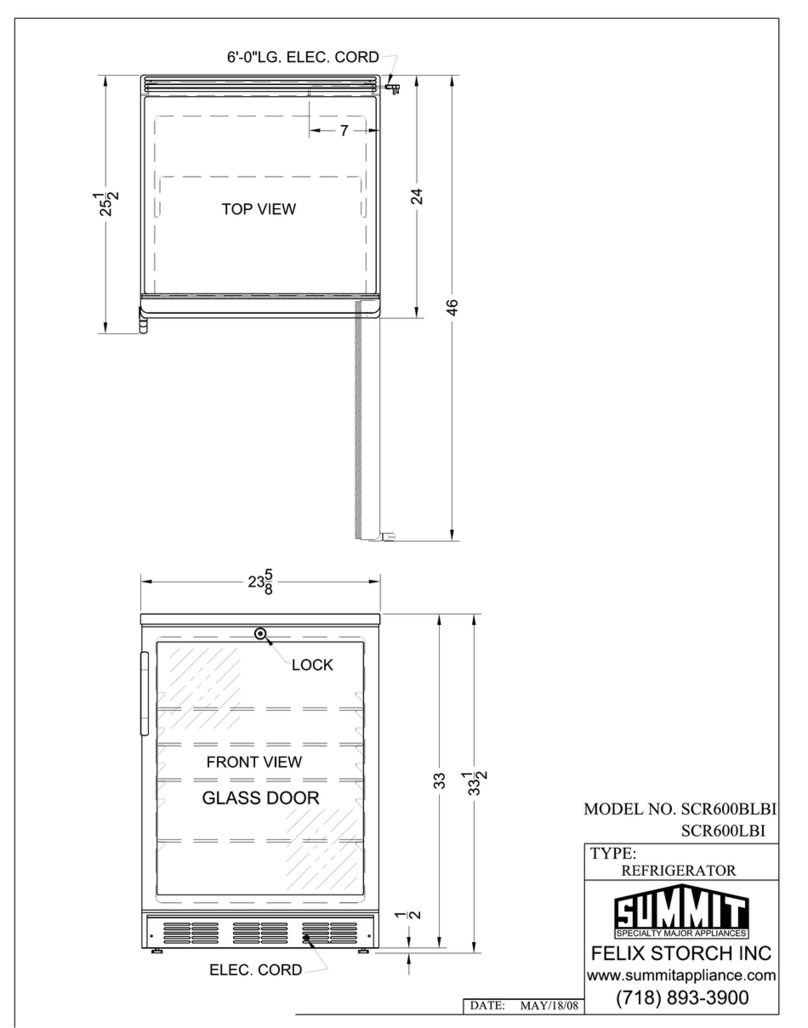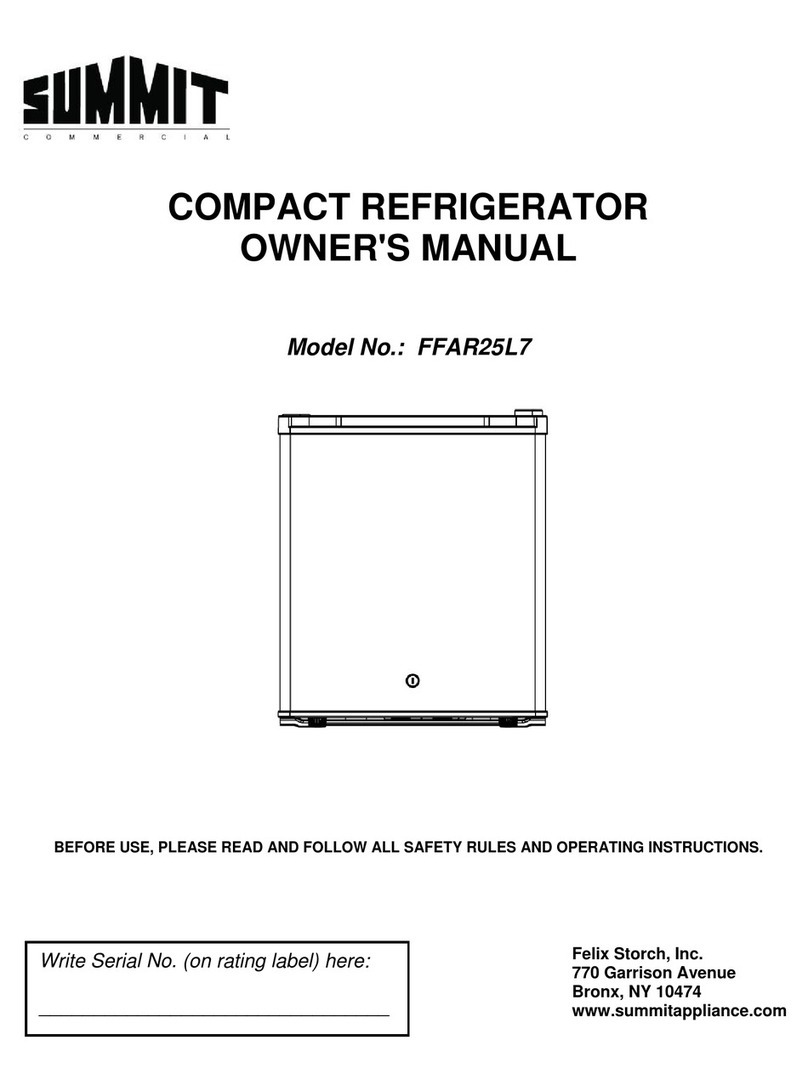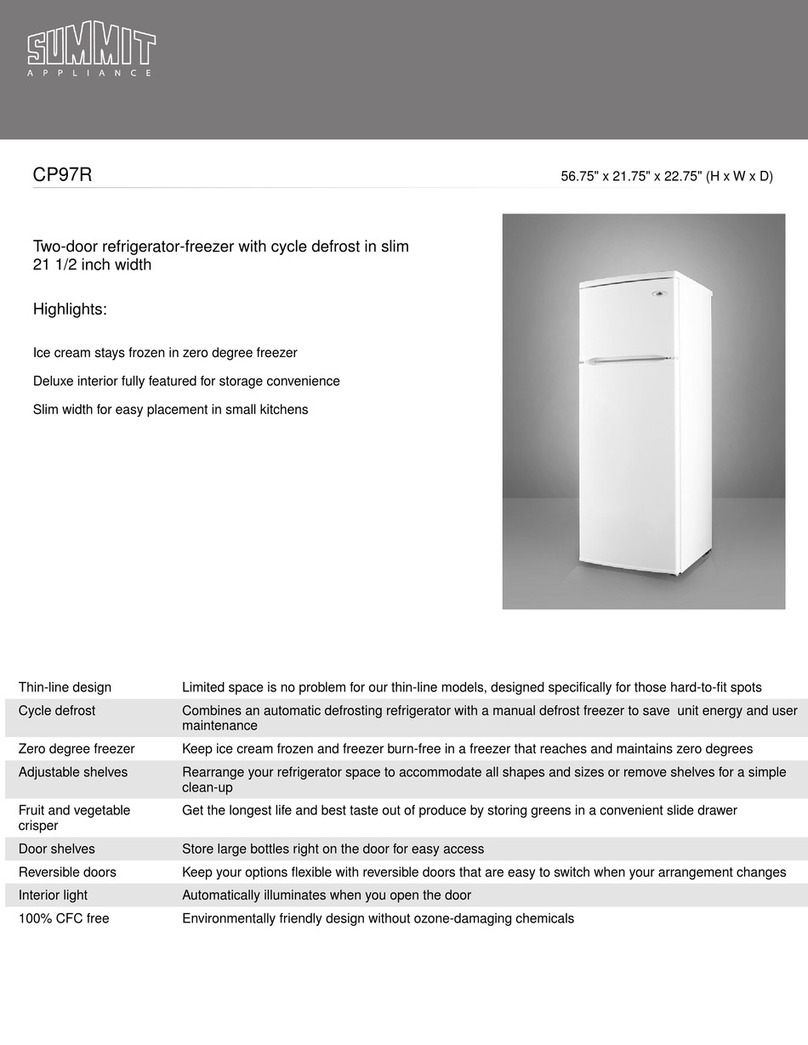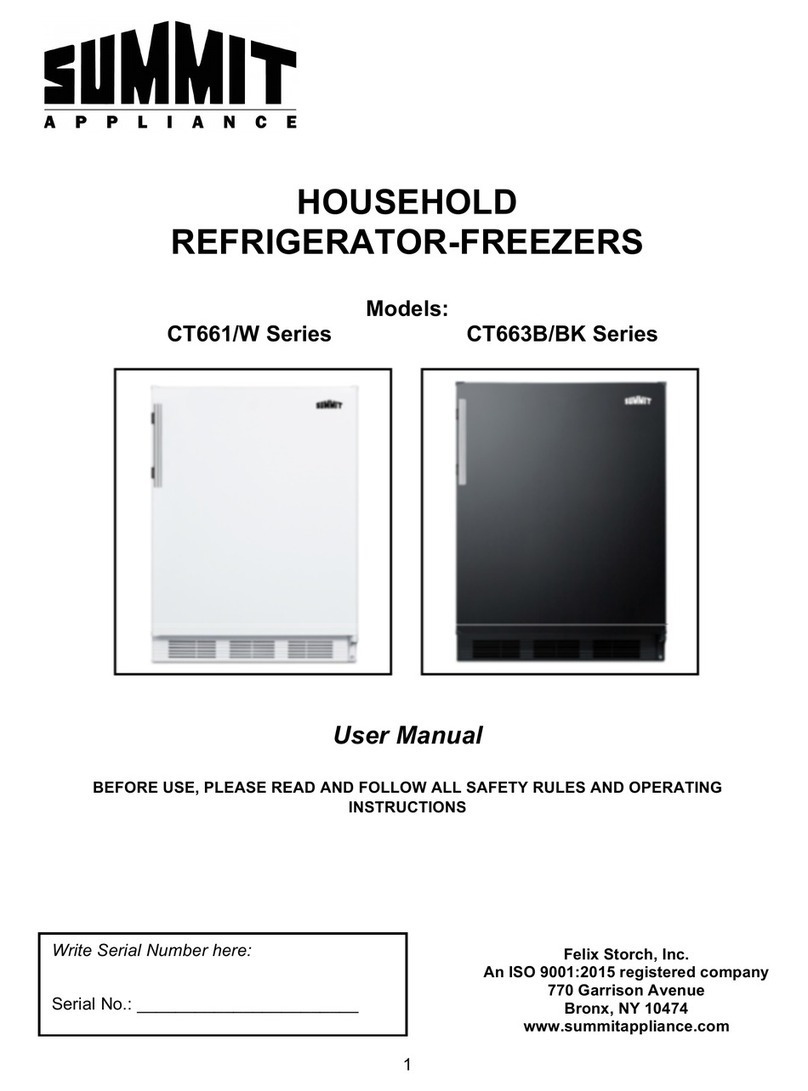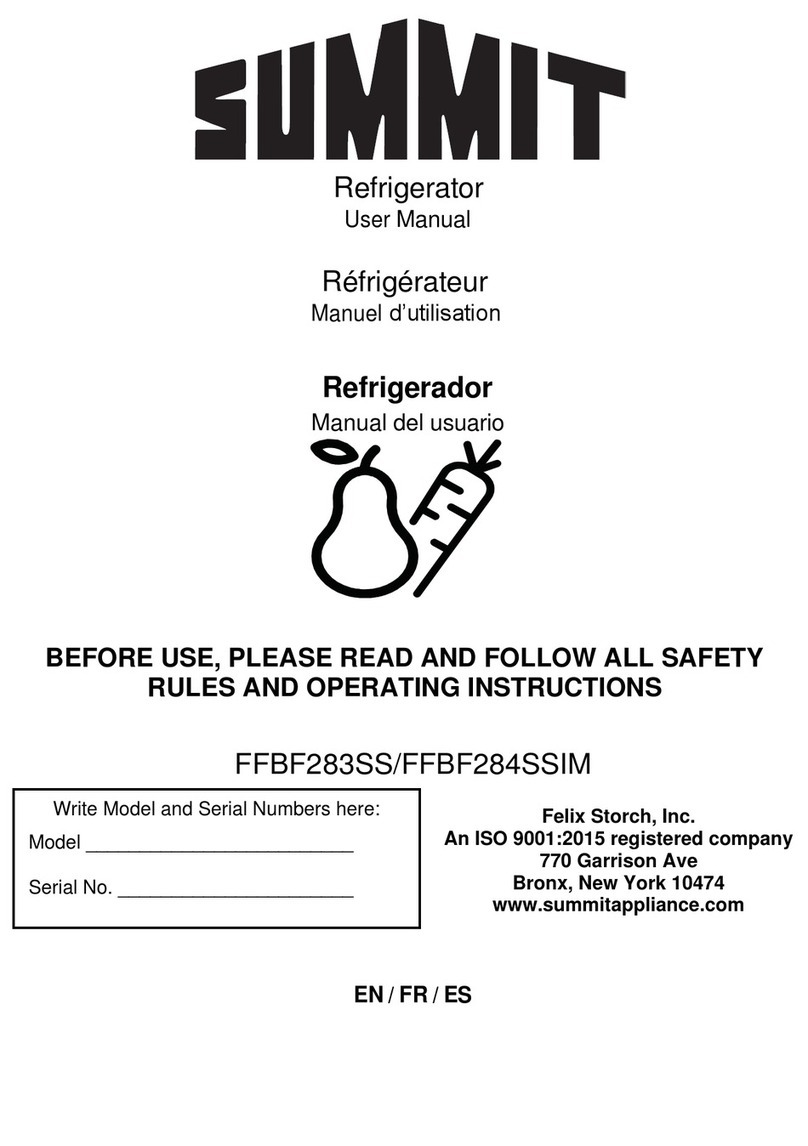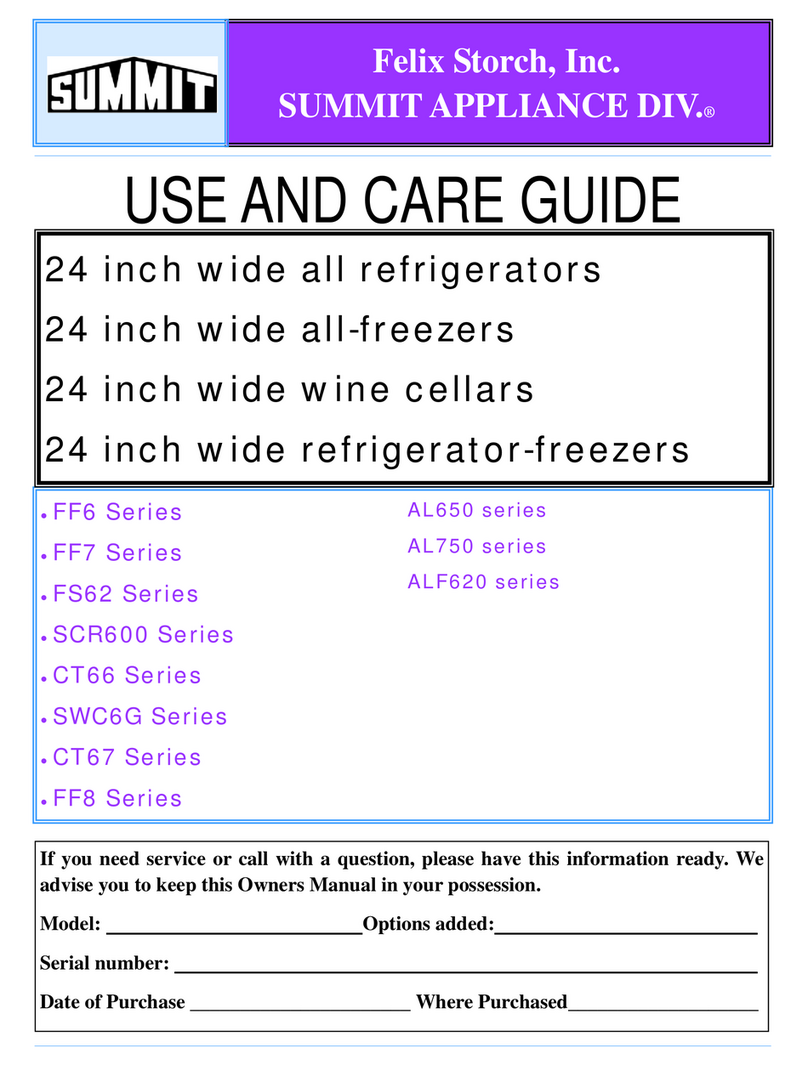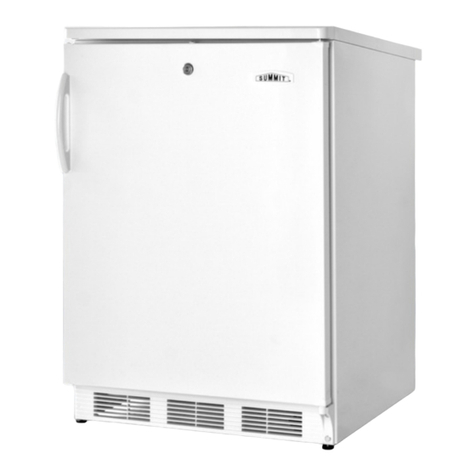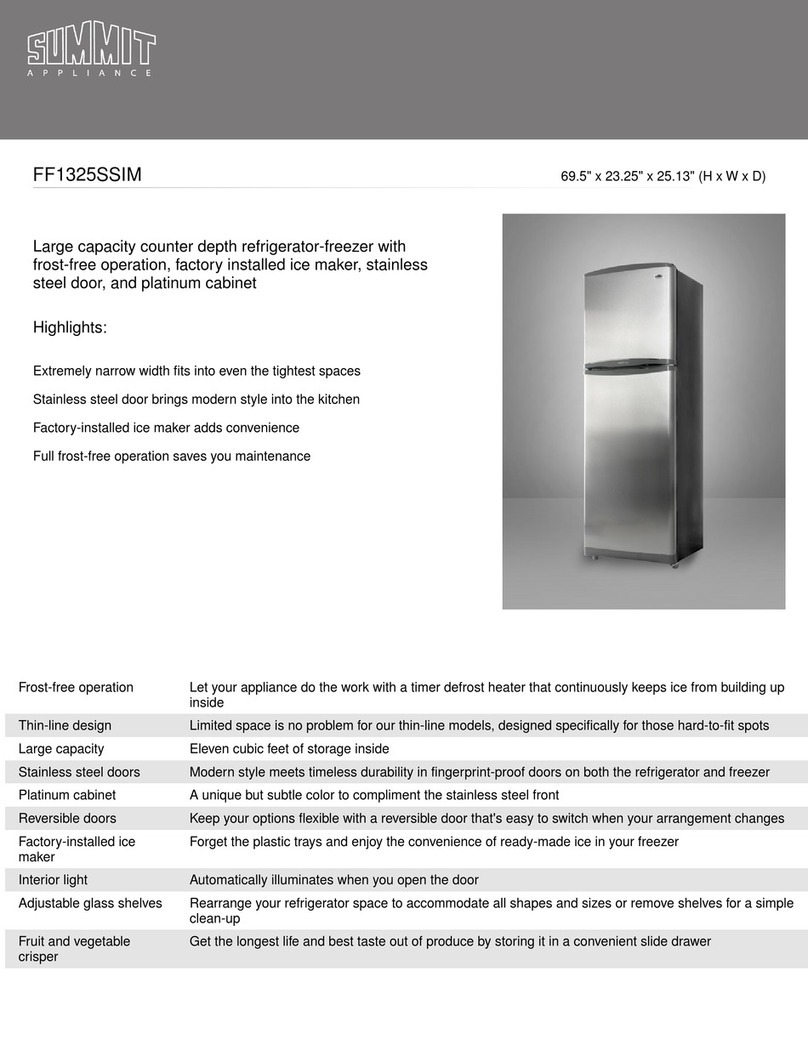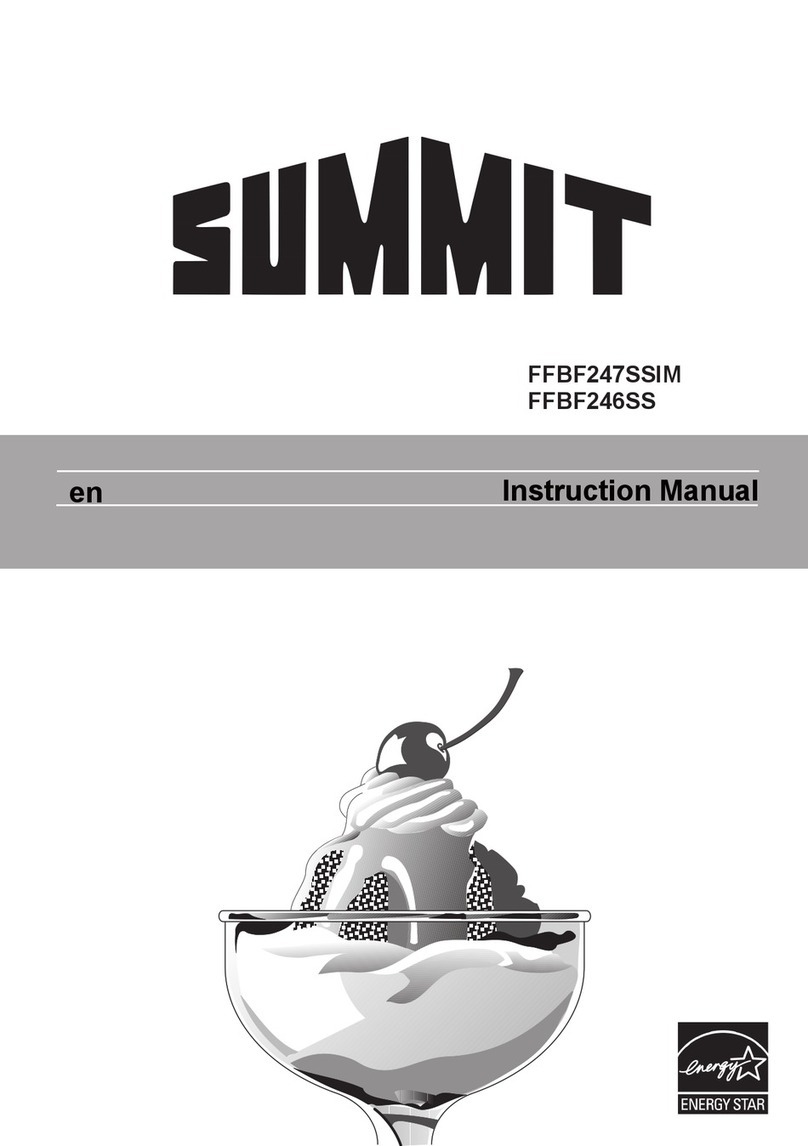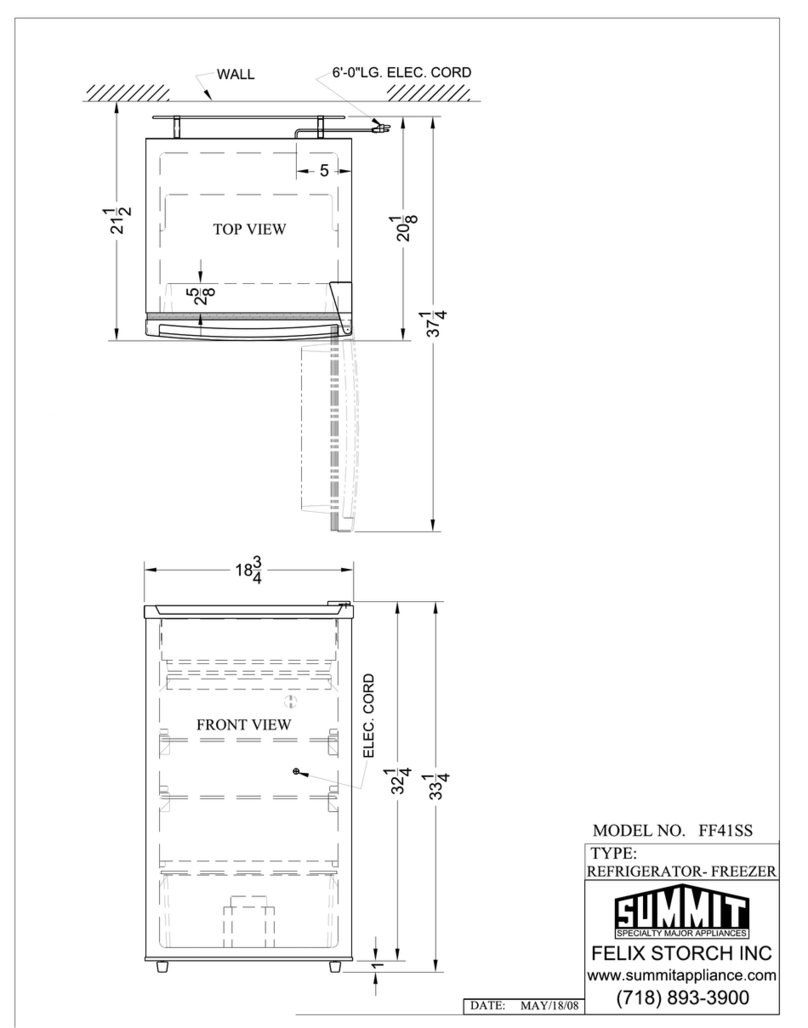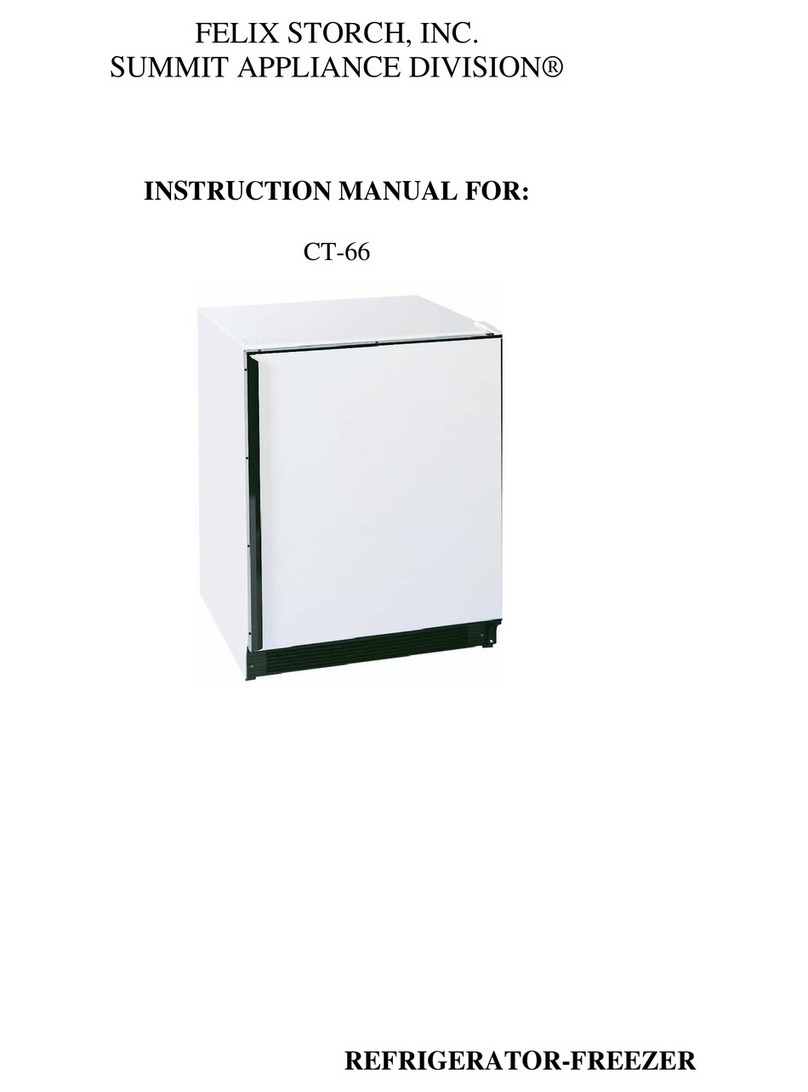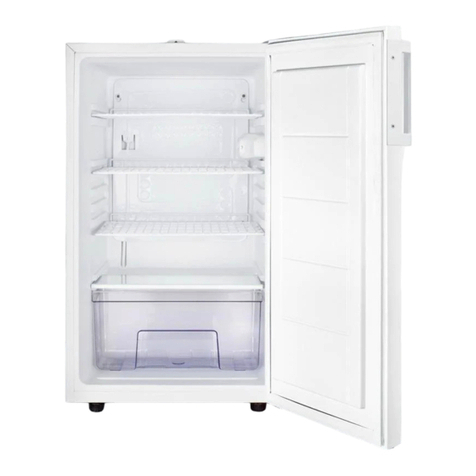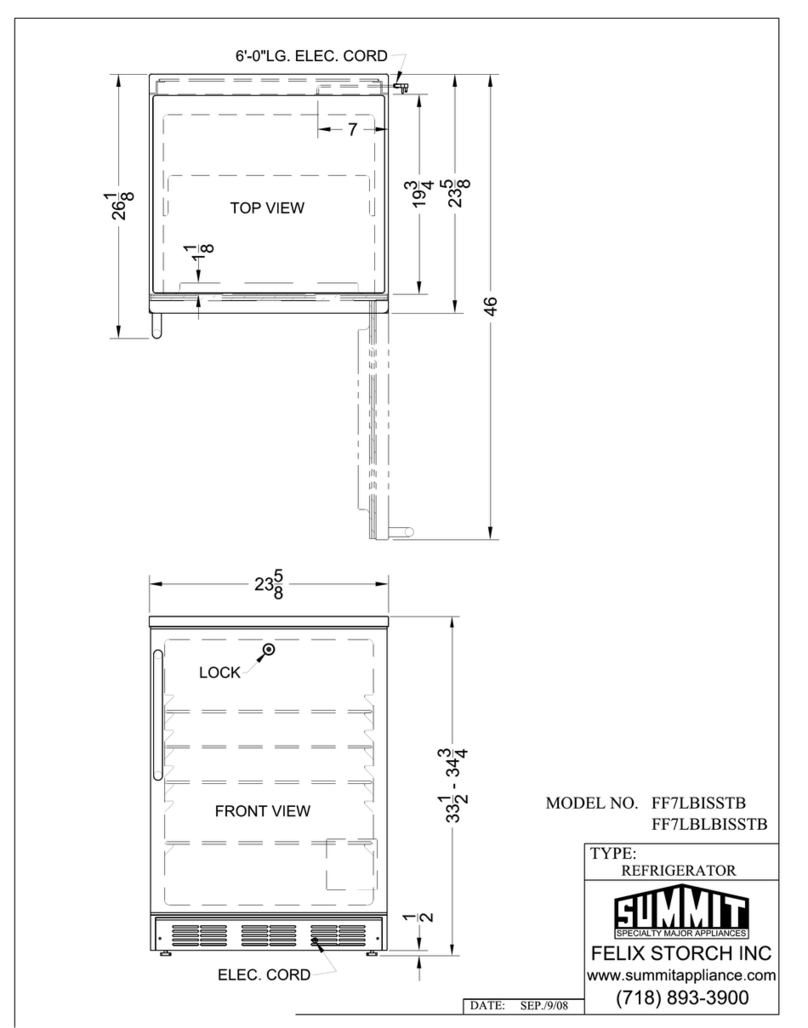4
•
WARNING:
Do not use mechanical
devices or other means to accelerate the defrosting process,
other than those recommended by the manufacturer.
•
WARNING:
Do not damage the refrigerant circuit.
•
WARNING:
Do not use electrical appliances inside the food storage compartments of the
appliance, unless they are of the type recommended by the manufacturer.
•
WARNING:
When disposing of the appliance do so only at an authorized waste disposal center.
Do not expose to flame.
•We recommend that you wait for 4 hours, with the product upright, before connecting the appliance to
allow the refrigerant to flow back into the compressor.
•The main plug must be accessible when the appliance is installed.
•This appliance is fitted with a 3-prong plug in accordance with local standards. The 3-prong plug
should be suitable for use in all houses fitted with sockets, in accordance with current specifications.
•Do not use extension cords or multiple sockets, which could cause overloading of wiring circuits and
could cause a fire. Always plug your appliance into its own individual electrical socket, which has a
voltage rating that matches the rating plate.
CAUTION: If the supply cord is damaged, it must be replaced by the manufacturer, its service agent, or
similarly qualified person in order to avoid a hazard.
•Make sure that the plug is not squashed or damaged. Otherwise, it may cause a short circuit, electric
shock, overheating, and even fire.
•DO NOT insert the main plug if the socket is loose. There is a risk of electric shock or fire.
•Switch off the appliance and disconnect it from the main power before you clean or move the
appliance.
•Never unplug the appliance by pulling on the electrical cord. Always grip the plug firmly and pull
straight out from the socket to prevent damaging the power cord.
•Do not operate the appliance without the interior light cover installed.
•Any electrical components must be replaced or repaired by a qualified electrician or authorized
service engineer.
•Do not use electrical appliances, such as ice cream makers, inside the food storage compartments of
the appliance, unless they are approved by the manufacturer.
•This appliance is CFC- and HFC-free and contains small quantities of Isobutane (R600a) which is
environmentally friendly, but flammable. It does not damage the ozone layer, nor does it increase the
greenhouse effect. Care must be taken during transportation and setting up of the appliance that no
parts of the cooling system are damaged. Leaking coolant can ignite and may damage the eyes.
•In the event of any damage:
oAvoid open flames and anything that creates a spark,
oDisconnect from the electrical power line,
oAir the room in which the appliance is located for several minutes, and
oContact the Service Department for advice.
•The more coolant there is in an appliance, the larger the room it should be installed in. In the event of
a leakage, if the appliance is in a small room, there is the danger of combustible gases building up.
For every ounce of coolant, at least 325 cubic feet of room space is required. The amount of coolant
in the appliance is stated on the data plate on the back of the appliance. It is hazardous for anyone
other than an authorized Service Person to carry out servicing or repairs to this appliance.
•Take serious care when handling, moving, and using the appliance to avoid either damaging the
refrigerant tubing or increasing the risk of a leak.
•Replacing component parts and servicing shall be done by factory authorized service personnel so as
to minimize the risk of possible ignition due to incorrect parts or improper service.
